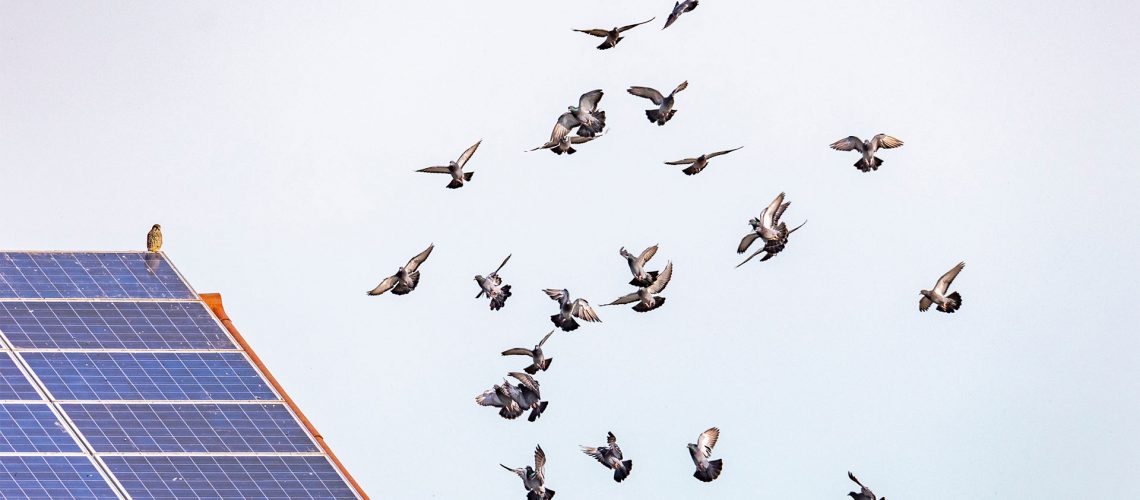Climate change endangers 60 percent of Northern American birds. To reverse negative effects like this, many homeowners invest in sustainable resources that positively impact both the climate and wildlife, the most popular being solar energy. However, solar energy devices aren’t without their flaws: every year, 138,000 birds die from colliding with solar panels.
Why Are Birds Attracted to Solar Panels?
When there aren’t enough trees in the neighborhood for the local bird population, they tend to find alternative places to nest and roost. And, wanting protection from predators on the ground, they do so in high places.
Meanwhile, solar panels are placed virtually anywhere but are installed in areas where they’re most efficient, typically rooftops of residential and commercial buildings. This makes the resting place of both birds and solar panels practically synonymous, which can become problematic for both of them.
Especially in desert regions of the US, solar panels create the “blue lake effect” for birds, who believe the blue panels are the water’s surface. Their attempts to land often leave them injured or fatally wounded. Alternatively, nesting creates hotspots underneath solar panels, and acidic poop can corrode the glass panes, degrading their efficiency. Fortunately, there are ways you can safely ward them away from your solar panels and prevent them from nesting there for good.
Keep a Well-Manicured Roof and Yard
Birds are attracted to areas with exposed food sources – like gardens – and plenty of nest-building materials. Of course, it’s impractical to pull up your garden, but maintaining your yard will make it less likely for birds to nest on your roof.
Birds will use anything to build nests, mostly leaves, twigs, grass, and small debris. To combat this, start by trimming trees and shrubbery, clearing out the gutters and roofs, and removing bird-friendly installments on the property like fountains to further decrease the bird population around your home.
But what if they’ve already nested around the panels? It’s not advised that anyone removes bird nests without using heavy-duty gear or calling pest control services, as it’s a hazardous job that can cause illness.
Line Your Solar Panels with Bird Scare Tape
Scare tape is one of the most inconspicuous ways to ward away most bird species without investing in something pricey. Scare tape is designed with a holographic sheen, which gives off a reflective quality that frightens pigeons, woodpeckers, grackles, and even herons and geese. You can also buy patterned tape that resembles snakes, one of the many predators of several species of bird.
Cut the strips into 3–5-foot strips and knot tightly to high hotspots on your property, like the upper branches of trees. For solar panels, it’s suggested that 2-3 strips of tape are hung on the frames of panels to catch the sunlight. This method is especially effective during spring and summer migrations, as well.
Install Bird Mesh
If you’re having issues with birds, chances are your panels are propped up and angled at the sun. This allows them to maximize the amount of energy they create but leaves space underneath for animals to seek shade and shelter.
Purchasing bird mesh will prevent birds from nesting underneath the panels. This isn’t a good option for solar-tracking panels that automatically track the sun. If you have stationary panels, on the other hand, it acts as a cage that will permanently keep out most bird species.
Conclusion
Rooftop solar panels provide shade and security for birds when there are few resources nearby. But when their nesting habits intersect with roof installation, it inadvertently contributes to their extinction rate while raising the cost of repairs to maintain your system. To protect your panels and your local bird population, be proactive, keep your home and lawn manicured, and utilize safe bird deterrent devices.


